
Copernical Team
Astronauts conclude spacewalk to replace antenna at space station
 Two NASA astronauts successfully wrapped up a spacewalk Thursday to replace a communications antenna faster than expected outside the International Space Station.
The new antenna was installed at around 9:45 a.m. EST, which NASA said was almost 90 minutes ahead of schedule. The pair spent the next few hours performing additional tasks to help prepare for future spacewalks.
The sp
Two NASA astronauts successfully wrapped up a spacewalk Thursday to replace a communications antenna faster than expected outside the International Space Station.
The new antenna was installed at around 9:45 a.m. EST, which NASA said was almost 90 minutes ahead of schedule. The pair spent the next few hours performing additional tasks to help prepare for future spacewalks.
The sp SpaceX successfully launches latest Starlink fleet from Florida
 SpaceX on Thursday launched 48 Starlink spacecraft from Florida as part of its plans to develop a second generation of communications satellites.
The Falcon 9 rocket successfully lifted off from Complex 40 at Cape Canaveral Space Force Station at about 6:12 p.m. EST.
SpaceX was also able to successfully land the first stage booster for the ninth time, its 89th successful recovery of
SpaceX on Thursday launched 48 Starlink spacecraft from Florida as part of its plans to develop a second generation of communications satellites.
The Falcon 9 rocket successfully lifted off from Complex 40 at Cape Canaveral Space Force Station at about 6:12 p.m. EST.
SpaceX was also able to successfully land the first stage booster for the ninth time, its 89th successful recovery of Northrop Grumman signs NASA to design space station for low earth orbit
 Northrop Grumman has signed a Space Act Agreement with NASA under the Commercial Low-Earth Orbit Development program for $125.6 million to design a safe, reliable and cost-effective commercial free-flying space station in low Earth orbit (LEO). Northrop Grumman's commercial space station design will use current flight systems and advanced crew-focused technology under development that allows for
Northrop Grumman has signed a Space Act Agreement with NASA under the Commercial Low-Earth Orbit Development program for $125.6 million to design a safe, reliable and cost-effective commercial free-flying space station in low Earth orbit (LEO). Northrop Grumman's commercial space station design will use current flight systems and advanced crew-focused technology under development that allows for Orbex to use Calor BioLPG for Prime launch
 Orbex and Calor have entered into an agreement that will see the iconic UK gas company supply the ultra-low carbon fuel that will launch the Orbex Prime rocket.
Under the terms of the new deal, Calor will supply Orbex with its BioLPG solution, a clean-burning propane produced from renewable feedstocks such as plant and vegetable waste material. This reduces CO2 emissions by up to 80 per ce
Orbex and Calor have entered into an agreement that will see the iconic UK gas company supply the ultra-low carbon fuel that will launch the Orbex Prime rocket.
Under the terms of the new deal, Calor will supply Orbex with its BioLPG solution, a clean-burning propane produced from renewable feedstocks such as plant and vegetable waste material. This reduces CO2 emissions by up to 80 per ce Spacewalking astronauts replace antenna after debris scare
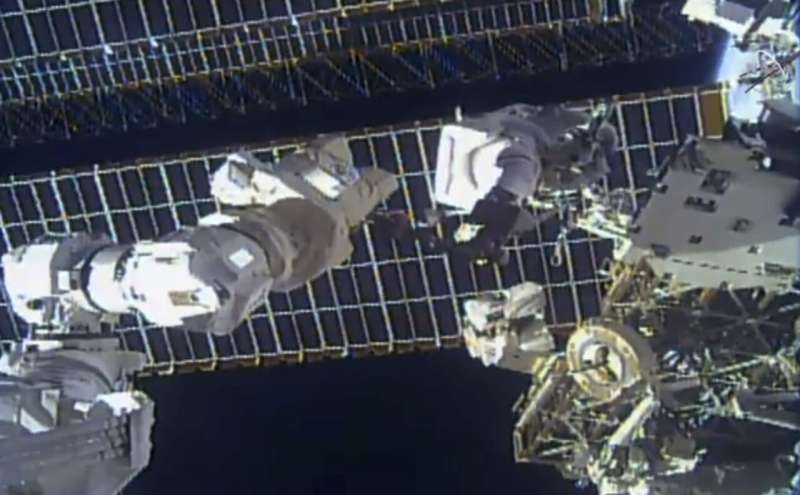
Spacewalking astronauts replaced a broken antenna outside the International Space Station on Thursday after getting NASA's all-clear for orbiting debris.
U.S. astronauts Tom Marshburn and Kayla Barron were supposed to complete the job Tuesday, but NASA delayed the spacewalk because of potentially threatening space junk. NASA later determined the astronauts were safe to go out, despite a slightly increased risk of a punctured suit from satellite wreckage.
12 things you never knew about Galileo satellites
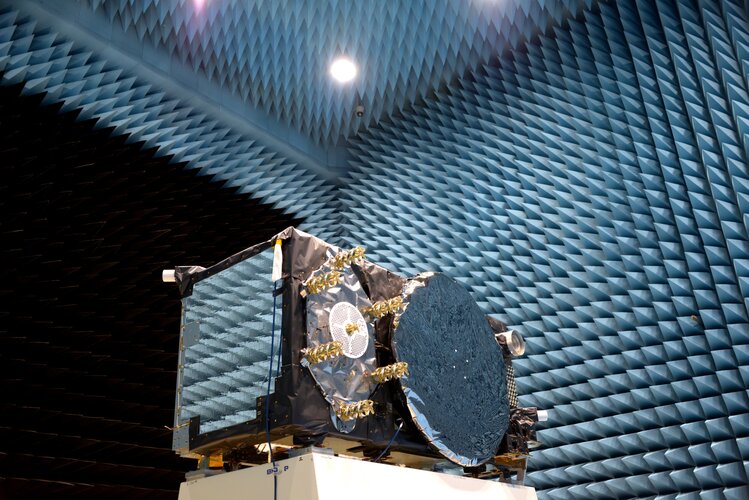
Europe’s Galileo satellite navigation system is providing the world’s most precise positioning services, but the satellites at its heart are surprisingly compact, and dependent on many different technologies to keep running. Here are 12 things you probably didn’t know about them:
Galileo launch postponed
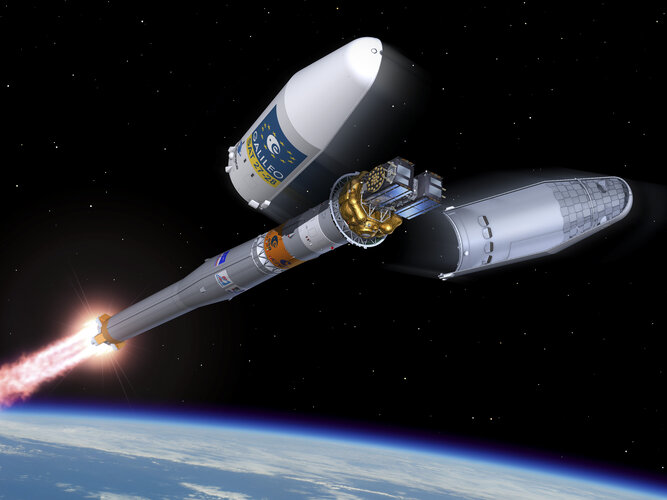
Due to unavailability of a downrange tracking station, Arianespace has taken the decision to postpone the fueling of Galileo's three stage Soyuz launcher. The VS26 Soyuz launch vehicle and the satellites are in a stable and safe condition.
A one-way phone call from Mars
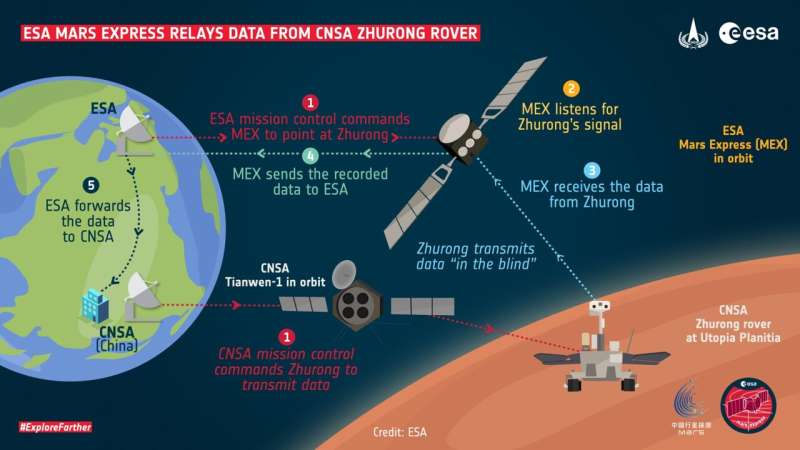
This November, ESA's Mars Express spacecraft carried out a series of experimental communication tests with the Chinese (CNSA) Zhurong Mars rover. Mars Express successfully caught data sent up 'in the blind' by the rover and relayed them to Earth where they were forwarded to the Zhurong team in China.
13:07 CET, 7 November, Utopia Planitia. The Zhurong rover, commanded by the Tianwen-1 orbiter, points its radio up at the Martian sky. Any minute now, ESA's Mars Express will begin to pass overhead. Zhurong starts transmitting a signal up into space. It has no way of knowing if its message is being received.
Landers and rovers on Mars gather data that help scientists answer fundamental questions about the geology, atmosphere, surface environment, history of water and potential for life on the Red Planet.
To get these insights to Earth, they first transmit the data up to spacecraft in orbit around Mars. These orbiters then use their much larger, more powerful transmitters to 'relay' the data across space to Earth.
"Normally, an orbiter like ESA's Mars Express first sends down a hail signal to a rover as a 'hello,'" says James Godfrey, Mars Express Spacecraft Operations Manager.
Two versions of a Curiosity selfie: narrow and wide
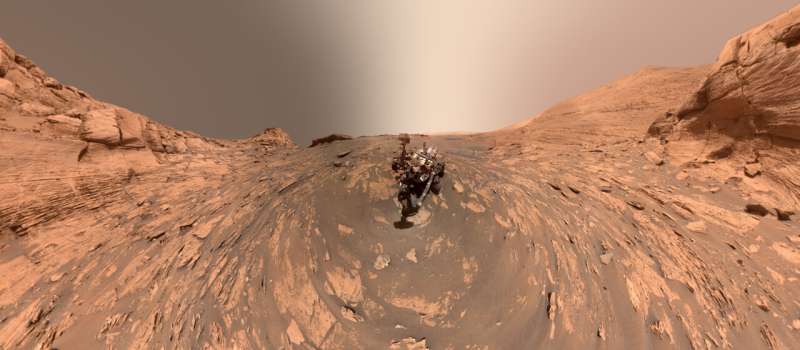
NASA's Curiosity Mars rover took this 360-degree selfie using the Mars Hand Lens Imager, or MAHLI, at the end of its robotic arm. The selfie comprises 81 individual images taken on Nov. 20, 2021—the 3,303rd Martian day, or sol, of the mission.
The rock structure behind the rover is "Greenheugh Pediment"; the hill that is middle distance on the right, is "Rafael Navarro Mountain." Curiosity is headed toward "Maria Gordon Notch," the U-shaped opening behind the rover to the left.
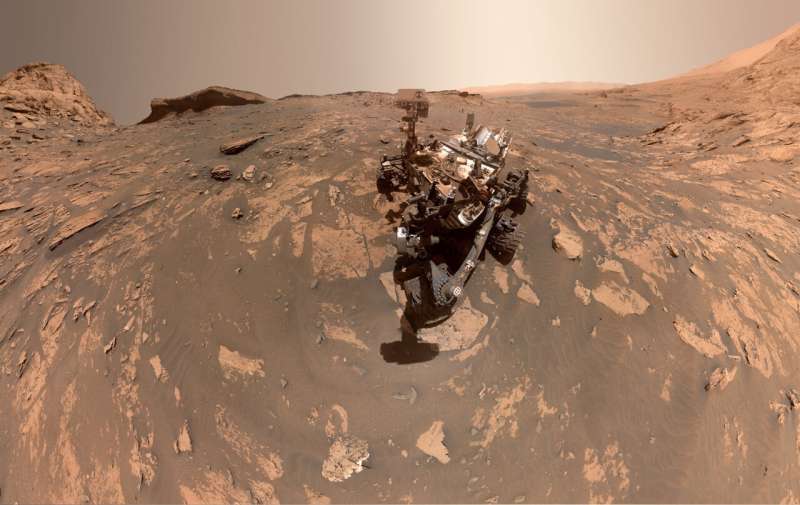
Explore further
